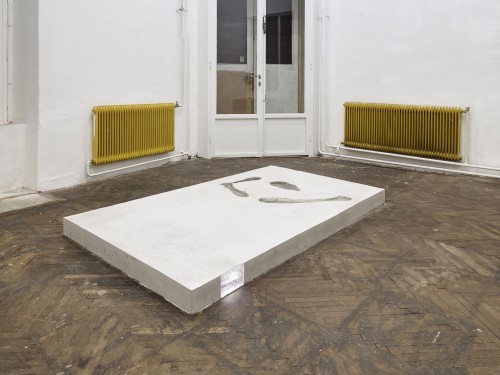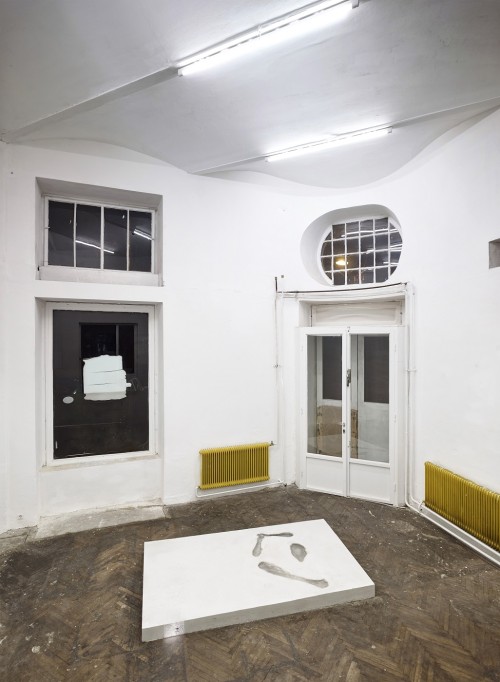dumb hole
19.09. — 15.10.2014
Opening: 19. 09. 2014, 19h
Finissage: 15. 10. 2014, 18h
HardstoneHotpink - A procedural performance beginning at sundown
unholy holeswalking through williamsburg on a hot afternoon, it struck me just how many holes had appeared due to the heat and how easy it would be to fall into one of them. there were holes everywhere: cellar entrances gaping in the pavement, manholes in the road, opened doors and windows, construction sites, various types of sockets and so on.if we instead of letting these holes get in the way stop for a minute to treat the word ‚hole‘ as concrete material similar to a piece of brick, it becomes possible for us to pick it up and shake it to see what it contains. the hole is always already there due to a hollow, a mark left behind, something once removed. it is fundamentally double-natured, simultaneously referring to an inner and an outer, a center and a circumference, a cause and an ‚affect‘. indeed, if we treat what is missing as a physical object, it enables us to psychogeograhically – a psychogeography concatenates a body and its discontents with the immediate surroundings and can be used experimentally to examine this relation – explore the hole along a pathway traversed by pocket philosophers and artists like, for example, gordon matta-clark. seeing the whole as an inside turned outside enables us to map another invisible hole where all boundaries are lost; the hole as a vast shadowy void of ghastly phantasmagoria, reverberating between the immensity of space and pinpoint portals to the unknown, black holes, wormholes, dumb holes, cuts into the present that let the future leak through. a hole is there, but it is not; it is always something else. a remainder vibrating with forgotten future perfects and past randoms. something has been removed, something else will take its place. as such, it is always a site of construction. matta-clark and his contemporaries – inhabiting the ruins that was the lower east side in the 1970s – saw it is part of an anarchitecture: the hole as a reminder to live in the ruins instead of building a mirage.this points to the hole as a contested site for class struggle. like capitalism, the hole is also contradictory: it is the crack in the pavement that shows us the beach beneath and hints at a radical alterity, haunting us with promises about a fuller life and an unknown future but it is also the attraction of wealthy immigrants coming to price out the local poor. not only does this change the overall infrastructure, it marks a turn to conservative values due to compositional changes among a given area‘s constituents. holes are the first places these new cities appear, where new borders are being drawn.capitalism always draws a border. it separates in order to exploit, it divides and it conquers, it encloses the commons. it produces a fundamental alienation from the world which art not only critiques but also, at its most successful, overflows, thus renegotiating the borderline between the body and the world. it is not only the separation of people into different classes and professions, it is the separation of the baby from the mother; the ur-separation of coming up of the water for the first time, to feel a limit to ones bodily confines and find that one has been bound by skin as a water balloon separated by a thin frame from the world. it is unholy (w)holes from which one emerges into life, seperation, alienation. it is why at the bottom of every hole the ocean waits as a great ghost.
Kasper Opstrup



